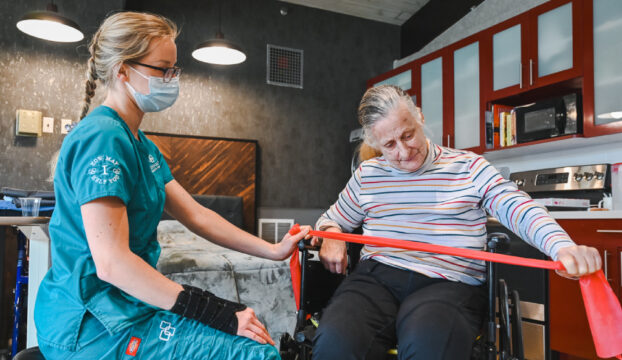Exploring the Diverse Methods of Physical Therapy for Improved Healing and Rehabilitation
Exploring the Diverse Methods of Physical Therapy for Improved Healing and Rehabilitation
Blog Article
Physical therapy is an important field that assists individuals heal from traumas, surgeries, and multiple medical issues. It involves a range of techniques aimed to enhance movement, alleviate discomfort, and enhance overall bodily function. Physical therapists are qualified experts who assess each patient’s needs and create personalized care plans. These plans often consist of workouts, hands-on therapy, and education about body mechanics. By using these varied techniques, physiotherapy can substantially improve a patient’s standard of life.
One common technique used in physical is rehabilitative exercise. This involves targeted actions and activities that help build muscle strength, improve flexibility, and increase stamina. For example, a client rehabilitating from knee surgery may engage in workouts that concentrate on rebuilding strength in the lower limb muscle groups. These exercises are meticulously chosen based on the patient’s condition and objectives. By incrementally boosting the difficulty and complexity of the activities, physiotherapy therapists can assist patients regain their strength and mobility over a period.
Another important method is hands-on therapy, which comprises physical methods to adjust the body’s soft muscles and articulations. This can involve stretching, mobilization, and manipulation. Hands-on therapy seeks to alleviate discomfort, reduce inflammation, and enhance circulation. For example, a therapist may apply light pressure to relieve tension in stiff muscles or to help a articulation function more freely. This technique is often integrated with other treatments to improve recovery and promote recovery. Patients often consider manual treatment to be a soothing and effective way to manage their pain.
In furthermore to exercises and manual treatment, education plays a vital role in physiotherapy. Therapists teach clients about their conditions and how to handle them effectively. This may entail guidance on correct posture, body movements, and techniques to avoid future injuries. For instance, a therapist might demonstrate a client how to lift weighty objects properly to avoid injuring their back. By enabling patients with understanding, physiotherapy informative post therapists assist them take an engaged part in their recovery and promote long-term wellness and well-being.
Ultimately, technological advancements is progressively being integrated into physical methods. Devices such as ultrasound, electrotherapy stimulation, and virtual reality can improve traditional therapy methods. These tools can help alleviate pain, encourage recovery, and provide interactive ways for patients to participate in their rehabilitation. For instance, virtual environments can generate immersive settings for patients to practice movements in a controlled and protected environment. As advancements continues to evolve, it provides promising possibilities for improving recovery results in physical.
In summary, physical encompasses a range of methods that work together to support rehabilitation and rehabilitation. Through rehabilitative exercises, manual treatment, patient education, and the use of technological tools, physiotherapy therapists offer comprehensive care customized to each individual’s needs. This holistic method not only helps patients recover their bodily capabilities but also empowers them to sustain their health in the long-term future. As more people acknowledge the advantages of physiotherapy, it continues to play a crucial part in the journey toward enhanced well-being and fitness.